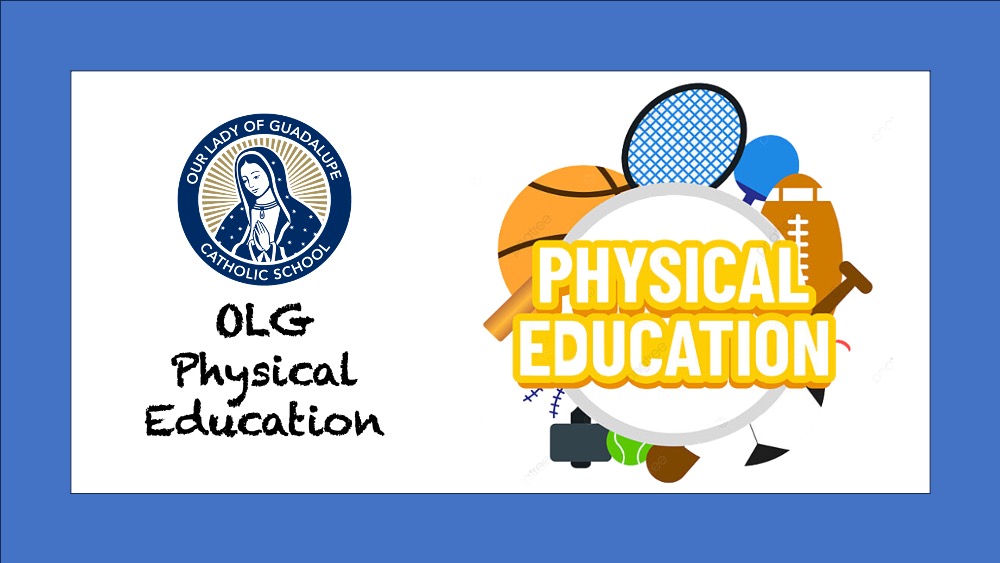According to the National Association for Sport and Physical Education, only about 4% of elementary schools, 8% of middle schools, and 2% of high schools provide adequate time for physical education classes for students. In fact, many schools have been cutting or reducing physical education (P.E.) programs due to budget constraints, the focus on academic subjects, increasing class sizes, the rise of technology and the increase of screen time and viewing it as a non-essential subject. This can have negative effects on students’ physical and mental health, as well as their academic performance.
At Our Lady of Guadalupe School, we consider physical education (P.E.) to be an essential component of a well-rounded education that promotes physical fitness, healthy habits, and overall well-being.
P.E. at OLG: A Whole Body Health and Fitness Program
At OLG, we believe that participating in a high-quality P.E. program provides numerous benefits for students, perhaps more than any other subject. Physical education is critical to our health, well-being, and overall development. The benefits of physical education in schools are far-reaching, including better academic performance. Physical education is more than just running around a track or kicking a ball. It teaches children key life skills alongside improving their health and wellbeing. Promoting a positive mindset about exercise from an early age will help to keep students stay healthy as they get older.
In addition, P.E. classes are another outlet to commit ourselves to celebrate differences, promote communication and self expression, and to foster gospel values. All classes contain a cooperative game or activity to encourage inclusion and community. P.E. and sports have been used as a practical tool to engage young people in their communities through volunteering, resulting in higher levels of leadership, community engagement and altruism among young people.
More than just Fitness
Physical education that begins in early childhood demonstrates the value of cooperation. Through modeling pro-social behaviors in class, children gain skills that pave the way for healthy interactions and relationships throughout life. This teaches them essential communication, as well as social skills. It helps them learn to work alongside a diverse range of peers and be able to support others. Learning the fundamentals of popular sports also provides a constructive way for our students to fit in with their classmates, especially as they approach adolescence. Being able to understand a range of sports allows them to be part of something bigger than their classroom.
As they hone their physical abilities, children learn self-discipline and goal-setting. They learn that there will always be winners and losers but that it is important to accept this and to get back up when needed, or in turn to encourage those around us to carry on.
Discipline is essential for sport and physical education and this can be both mental and physical. In P.E. and sports, children need to follow rules. Sometimes they must accept decisions that they may not agree with. This teaches them an important life skill that will help them throughout their life and careers.
 Curricular Goals
Curricular Goals
The curricular goals for the school year are motor skill development, health enhancing physical activity and interactive behavior development. The National Association for Sport and Physical Education (NASPE) recommends a minimum of 60 minutes of quality physical education for all students daily, or 150 minutes per week for elementary. Our curriculum is based on the NASPE National Standards for Physical Education.
Standard 1: Demonstrates competency in motor skills and movement patterns needed to perform a variety of physical activities.
Standard 2: Demonstrates understanding of movement concepts, principles, strategies, and tactics as they apply to the learning and performance of physical activities.
Standard 3: Participates regularly in physical activity.
Standard 4: Achieves and maintains a health-enhancing level of physical fitness.
Standard 5: Exhibits responsible personal and social behavior that respects self and others in physical activity settings.
Standard 6: Values physical activity for health, enjoyment, challenge, self-expression and/or social interaction.

 Curricular Goals
Curricular Goals